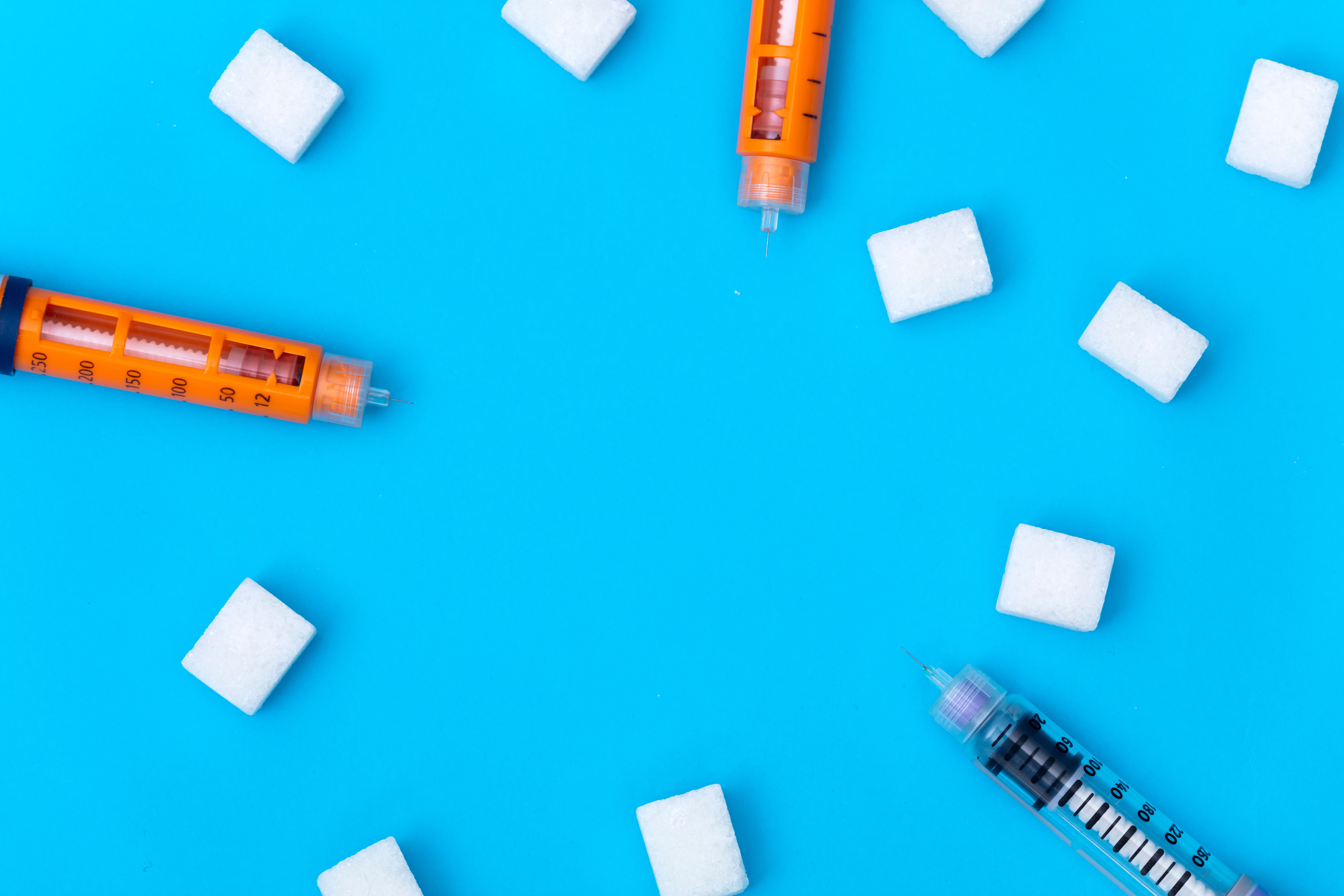- Bone Health
- Immunology
- Hematology
- Respiratory
- Dermatology
- Diabetes
- Gastroenterology
- Neurology
- Oncology
- Ophthalmology
- Rare Disease
- Rheumatology
Biosimilar CT-P42 Demonstrates Equivalence to Aflibercept for DME
Biosimilar CT-P42 demonstrated comparable efficacy, safety, and tolerability to reference aflibercept in treating diabetic macular edema (DME).
Biosimilar CT-P42 demonstrated comparable efficacy, safety, and tolerability to reference aflibercept in treating diabetic macular edema. | Image Credit: nazif - stock.adobe.com

Patients with diabetic macular edema (DME) displayed similar outcomes when treated with biosimilar candidate CT-P42 or reference aflibercept (Eylea) in terms of efficacy, with similar pharmacokinetic (PK), usability, safety, and immunogenicity profiles, according to a study published in Ophthalmology Retina.1
Patients with diabetes often develop DME, a serious form of vision loss. The accumulation of extracellular fluid in the macula resulting from DME can lead to increased retinal vasculature permeability secondary to microvascular damage to the inner retinal capillaries and development of retinal microaneurysms.
A critical component to this pathophysiology is vascular endothelial growth factor (VEGF), which alters retinal capillary permeability by increasing the phosphorylation of proteins involved with tight junctions like zonula occludens.2 Endothelial cell proliferation is the aftermath of the VEGF activation of mitogen-activated protein.
Some of the recommended drugs for patients with DME include aflibercept, bevacizumab, faricimab-svoa, ranibizumab, dexamethasone, and fluocinolone acetonide.3 Providers may also suggest procedures like photocoagulation to address the leakage in the eye or vitrectomy to remove scar tissue or cloudy fluids.
Both the FDA and the European Medicines Agency (EMA) approved aflibercept for the treatment of DME.1 Originally, aflibercept was approved as a first-line therapy for patients with severe DME, when visual loss has increased because of edema involving the center of the macula.
In countries with abundant resources, patients benefit from intravitreal injection anti-VEGF therapy to treat DME. However, in underserved countries with less resources where the prevalence of DME may be higher, this option may not be available, and less expensive alternatives such as biosimilars must be considered.
CT-P42 Compared With Aflibercept for DME
To determine the therapeutic similarity of CT-P42 compared with aflibercept, patients with DME were enrolled in a randomized, active-controlled, double-masked, phase 3 clinical trial. They either received the aflibercept biosimilar candidate, CT-P42, or reference aflibercept by intravitreal injection every 4 weeks followed by every 8 weeks in the main study period.
Data collection began when the first patient was randomized on July 22, 2021, and ended at week 24 for the last patient on October 14, 2022. A total of 348 patients were randomized throughout the study, with 173 patients who took CT-P42 and 175 patients who took reference aflibercept.
The study population was mainly White (64.4%) and male (58.3%), with a median age of 63 years. Most patients had type 2 diabetes (93.1%) rather than type 1 diabetes (6.9%). More than half of the patient population (72.7%) had a baseline best corrected visual acuity (BCVA) score of at least 55 letters. The average BCVA scores were 60.3 and 60.4 in the CT-P42 and reference aflibercept groups, respectively.
By the end of week 24, most patients completed the study from start to finish (96.3%). There were more patients who took CT-P42 that completed the study (97.1%) than the patients who took reference aflibercept (95.4%).
Very few patients discontinued the study on or before week 24 in the CT-P42 group (2.9%) or the reference aflibercept group (4.6%). Discontinuation was mainly due to withdrawal by the patient (CT-P42, 1.2%; reference aflibercept, 1.7%).
Efficacy, Pharmacokinetics, and Safety of CT-P42 in DME
Both the CT-P42 (9.43 letters) and reference aflibercept (8.85 letters) groups demonstrated improved visual acuity from baseline to week 8. The treatment difference between groups was minimal (0.58 letters) and within the prespecified equivalence margin (95% CI, −0.73 to 1.88). Similar efficacy was observed for both groups in other key retinal outcomes through week 24, confirming therapeutic equivalence.
Similar PK parameters were found among both treatment groups, with low plasma concentrations and no evidence of drug accumulation. At week 0, all injections with the vial kit were successfully administered without any user errors or close calls in either treatment group.
Treatment-emergent adverse events (TEAEs) were similar across treatment groups, at 50.3% and 53.7% of patients in the CT-P42 and reference aflibercept groups, respectively. The majority of the TEAEs were grade 1 to 2 in intensity, the most frequent being conjunctival hemorrhage (CT-P42, 1.2%; reference aflibercept, 2.3%) and intraocular pressure increased (CT-P42, 1.2%; reference aflibercept, 1.7%).
Both groups were comparable in the incidence of nonocular TEAEs reported, with 38.7% of patients in the CT-P42 group and 38.3% in the reference aflibercept group. The study population primarily comprised patients with negative antidrug antibody results for the initial 24 weeks. Immunogenicity profiles remained similar across groups during this period.
Study limitations included a small, predominantly White patient population and short-term follow-up. Long-term safety and efficacy data for CT-P42 in real-world settings are necessary.
“This study demonstrated equivalence of CT-P42 and reference aflibercept at a dose of 2 mg in 0.05 mL in terms of efficacy. The PK, usability, safety, and immunogenicity profiles of CT-P42 and reference aflibercept were also comparable in patients with DME,” the authors concluded.
References
1. Wolf S, Stanga PE, Veselovsky M, et al. Biosimilar candidate CT-P42 in diabetic macular edema: 24-week results from a randomized, active-controlled, phase III study. Ophthalmol Retina. 2024;1-22. doi:10.1016/j.oret.2024.06.013
2. Gupta N, Mansoor S, Sharma A, et al. Diabetic retinopathy and VEGF. Open Ophthalmol J. 2013;7:4-10. doi:10.2174/1874364101307010004
3. What is diabetes-related edema (DME)? Cleveland Clinic. February 14, 2023. Accessed August 12, 2024. https://my.clevelandclinic.org/health/diseases/24733-diabetes-related-macular-edema
Newsletter
Where clinical, regulatory, and economic perspectives converge—sign up for Center for Biosimilars® emails to get expert insights on emerging treatment paradigms, biosimilar policy, and real-world outcomes that shape patient care.
